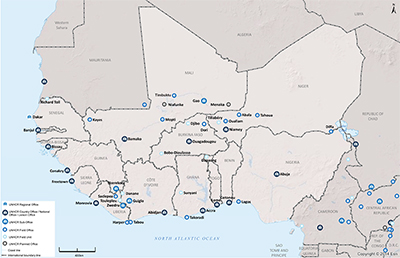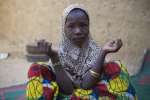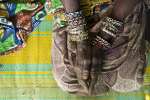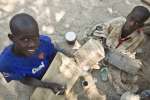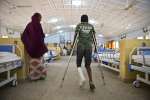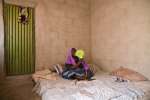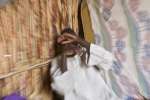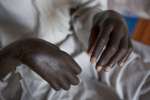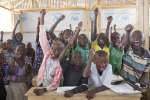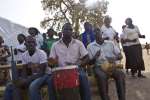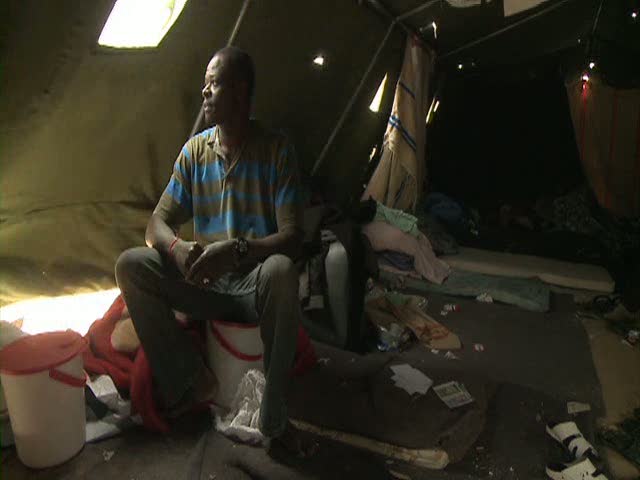Home > Where We Work > Africa > West Africa > Nigeria
2015 UNHCR subregional operations profile - West Africa
| Overview |
Parts of West Africa remain affected by insecurity, including food insecurity in the Sahel and political crises. Elections are scheduled for 2015 in Benin, Burkina Faso, Côte d'Ivoire, Ghana, Nigeria, and Togo. UNHCR has developed several contingency plans with countries likely to see an influx of people if there are any instances of post-election upheaval. At regional level, and within the framework of emergency preparedness and emergency response, UNHCR has also developed a task force to monitor and report threat levels.
In Mali in 2014, presidential elections and some improvements in the security situation in the north, led more Malian refugees to request assistance to return home. However, as the security situation in some areas of origin remains unpredictable, most refugees have not yet returned. UNHCR will, in consultation with host countries and Malian authorities, provide refugees with information both on the situation in areas of origin and on ongoing activities aimed at improving conditions. It will also work with partners to ensure that those who have returned are integrated into support structures. While more than 12,900 refugees have been assisted to return in 2014, it is expected that another 42,000 will return home in 2015, along with an estimated 74,000 internally displaced people (IDPs).
Violent clashes between government forces and armed groups in the north of Nigeria have triggered large waves of displacement. More than half a million civilians have been internally displaced, while others have sought safety in neighbouring Cameroon, Chad and Niger. The humanitarian crisis resulting from this internal conflict shows no sign of abating in 2015. UNHCR and partner agencies have stepped up responses to the Nigeria refugee crises in the neighbouring countries already in 2014, which need to be sustained into 2015. UNHCR has also taken measures to strengthen its collaboration in the protection of IDPs inside Nigeria, under the leadership of the recently appointed Humanitarian Coordinator.
Beyond political and security challenges, food insecurity continues in the Sahel. UNHCR will support refugees and IDPs by providing more agricultural tools while working to find alternative solutions for refugees in protracted situations.
Meanwhile, the spread of Ebola in Guinea, Liberia, Nigeria, Senegal and Sierra Leone, has already killed 3,000 people. The outbreak is having dramatic consequences on social and economic activities in West Africa, and some borders have been closed. Many farmers no longer tend their fields in affected areas, where prices have soared. Furthermore, Ebola is affecting UNHCR's refugee operations, including the suspension since July 2014 of Ivorian refugee returns from Liberia. The organization has maintained its presence in the three most affected countries but has suspended non-essential missions within and to affected countries. Quarantine measures, particularly in Liberia and Guinea, prevent refugees from leaving the camps in search of livelihood activities to complement the limited food basket, making them more dependent on assistance. In this situation, adequate food supplies will be critical for preventing and combating malnutrition.
UNHCR continues to implement its regional solutions strategies for protracted refugee populations, in close collaboration with host governments. It will, as a sub-regional priority, advocate an alternative residence status for long-staying refugees.
| Response and implementation |
UNHCR's operations in Côte d'Ivoire, Liberia, Mali and Niger are covered in separate chapters.
Regionally, UNHCR will continue to oversee and to provide protection guidance and programme support to nine West African operations that host more than 150,000 refugees through its Regional Office for West Africa. It will ensure the coordination, policy, oversight and technical support for operations in Benin, the Gambia, Ghana, Guinea, Guinea-Bissau, Nigeria, Senegal, Sierra Leone and Togo. In addition, UNHCR's Regional Representation for West Africa will coordinate the regional response to emergencies in Mali and Nigeria. The Regional Representation will also continue to assume a wider coordination function for Burkina Faso, Côte d'Ivoire, Liberia, Mali and Niger.
In Benin, 219 refugees, mainly from the Central African Republic and Côte d'Ivoire, will require UNHCR's protection in 2015. The Government's commitment to finding a definitive solution to long-staying refugees means the number of refugees in Benin has drastically decreased. Since January 2013, a strategy focusing on local integration was developed and implemented with UNHCR support. Refugees wishing to stay in the country were granted 10 years legal residence and issued with documentation that allowed them to integrate locally.
In Burkina Faso, UNHCR will continue to provide protection and multi-sectoral assistance to, and promote the self-reliance of, refugees. Conditions permitting, the organization will support Malian refugees in Burkina Faso willing to return home and use resettlement as both a protection tool and durable solution for the most vulnerable. UNHCR will ensure delivery of health services in refugee camps, strengthening reproductive health, HIV and AIDS services, and health referrals. The organization aims to ensure that at least 5,000 refugee children are enrolled in quality primary education in 2015. The construction of durable transitional shelters and the distribution of shelter materials and tool kits will also be a UNHCR priority in Burkina Faso.
In the Gambia, most refugees are Senegalese. More than 8,000 of them live in the rural areas in more than 50 host villages in Foni, along the Gambia's border with Senegal. Some 1,200 refugees from Côte d'Ivoire, Liberia, Senegal and Sierra Leone live in the Greater Banjul area. In 2015, as part of its comprehensive solutions strategy for Senegalese refugees, UNHCR will look to naturalization and alternative status for the refugees, while continuing to explore practical ways of empowering the refugees through the promotion of self-reliance activities.
In 2015, UNHCR will protect and assist more than 14,000 refugees, mainly Ivorians and Togolese, in Ghana. UNHCR will promote self-reliance through skills training and income-generation activities to help transition families from assistance to self-sustenance. The joint UN strategy - coordinated between UNHCR and WFP - envisages a phase-out of food assistance for the in-camp population by March 2015. An estimated 2,000 asylum-seekers are expected in Ghana in 2015, mainly from Côte d'Ivoire. Around 2,000 Togolese refugees opted to locally integrate in Ghana and negotiations are ongoing to provide them with legal residence.
In Guinea, an estimated 6,600 refugees will continue to need international protection and UNHCR will support the repatriation of Ivorians wishing to do so.
Guinea-Bissau will continue hosting more than 8,400 Senegalese refugees living in rural areas. Negotiations with the Government are ongoing to facilitate local integration through an alternative legal status or naturalization. UNHCR, with government support, has developed a road map to facilitate the implementation of a comprehensive solutions strategy for Senegalese refugees in the country.
In 2015, the Office in Nigeria will be responding to the protection needs of some 1,700 recognized refugees. UNHCR will in addition pursue the repatriation of the Cameroonian refugees. It will strengthen its presence and capacity in the country and will monitor protection needs, in collaboration with the National Human Rights Commission, national NGOs and civil society. UNHCR will also build the capacity of state agencies by promoting training on basic principles of protection and camp coordination and camp management. The organization, together with partners, will support the authorities in the implementation of the Kampala Convention, strengthening their capacity in protection monitoring and response.
At least 15,800 refugees live in Senegal, more than 13,500 of whom are Mauritanian. Refugee identity cards issued by the Government of Senegal allow them to enjoy social and economic rights. In the absence of repatriation opportunities, UNHCR will continue to strengthen the local integration process in 2015.
Sierra Leone hosts approximately 690 Liberian refugees. A group of around 270 Liberians, whose nationality was not confirmed during the cessation process, will remain of concern to UNHCR in 2015 and alternative solutions for them will be explored.
Togo hosts more than 2,800 refugees and 420 asylum-seekers, who live in urban areas. Among the urban refugee population, 85 per cent are Ivorians and most live in Avépozo refugee camp. Many Ivorian refugees are expected to repatriate in 2015. Ghanaians who arrived after 2010 will continue receiving protection and assistance and UNHCR will pursue a durable solutions strategy for long-stay Ghanaian refugees in northern Togo.
| Financial information |
While the revised 2014 financial requirements for West Africa amounted to USD 265.1 million, the subregional budget for 2015 is set at USD 233.5 million. Since 2011, UNHCR has observed an increase in population movements in this subregion that has been affected by several emergencies.
| UNHCR 2015 budgets for West Africa (USD) | ||||||
|---|---|---|---|---|---|---|
| Operation | 2014 Revised budget (as of 30 June 2014) |
2015 | ||||
| Refugee programme PILLAR 1 |
Stateless programme PILLAR 2 |
Reintegration projects PILLAR 3 |
IDP projects PILLAR 4 |
Total | ||
| Total | 265,071,891 | 198,705,603 | 5,547,898 | 18,671,616 | 10,533,984 | 233,459,101 |
| 1. Includes activities in Benin, Gambia, Guinea-Bissau, Nigeria, Sierra Leone and Togo. | ||||||
| Burkina Faso | 25,708,635 | 20,167,209 | 0 | 0 | 0 | 20,167,209 |
| Côte d'Ivoire | 27,337,841 | 14,533,233 | 3,599,304 | 7,917,216 | 0 | 26,049,754 |
| Ghana | 11,137,473 | 10,693,861 | 0 | 0 | 0 | 10,693,861 |
| Guinea | 4,874,471 | 5,378,500 | 0 | 0 | 0 | 5,378,500 |
| Liberia | 35,328,663 | 25,278,092 | 0 | 0 | 0 | 25,278,092 |
| Mali | 69,589,103 | 48,598,107 | 0 | 10,754,399 | 8,058,010 | 67,410,517 |
| Niger | 41,657,211 | 31,526,607 | 0 | 0 | 0 | 31,526,607 |
| Senegal Regional Office[1] | 49,438,494 | 42,529,993 | 1,948,594 | 0 | 2,475,974 | 46,954,560 |
Source: UNHCR Global Appeal 2015 Update

